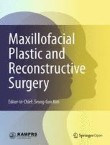Retrospective analysis on prognosis of oral cancer patients according to surgical approaches for effective cancer ablation: swing approach versus visor approach
For the surgical treatment of oral cancer, it is sometimes necessary to expand intraoral access within the oral cavity. The “swing approach” that involves lip splitting of the mandible and temporary mandibular...
